The thing about seeing every sunrise is that it involves waking up long before every sunrise. At first, I dreaded hearing my alarm go off, so early it should really be classified as late night rather than early morning. After four seasons as a field technician on the Integrated Monitoring in Bird Conservation Regions (IMBCR) Colorado and Utah crew, however, I find I rather enjoy hiking to my survey in the dark.
Some mornings I can camp close to my survey and it is as easy as unzipping my sleeping bag and walking a couple hundred meters while dew soaks into my pant legs and wakes me up. Other mornings, it involves waking up at 2:30 a.m. to hike for two and a half hours to be on my first point half an hour before sunrise. Thanks to heavy snow runoff, there have been a lot of early morning hikes this year. Many of the dirt roads that lead to my surveys were washed away or blocked by fallen trees, leaving me to hike the last couple of miles on foot. Getting out of my sleeping bag that early is an exercise in self-discipline and brain power. One morning I got dressed in the dark, put my pants on inside out, and then panicked because I thought I lost my pockets. Once I am on the trail, though, there is a certain magic in being out that early before the rest of the world is awake.
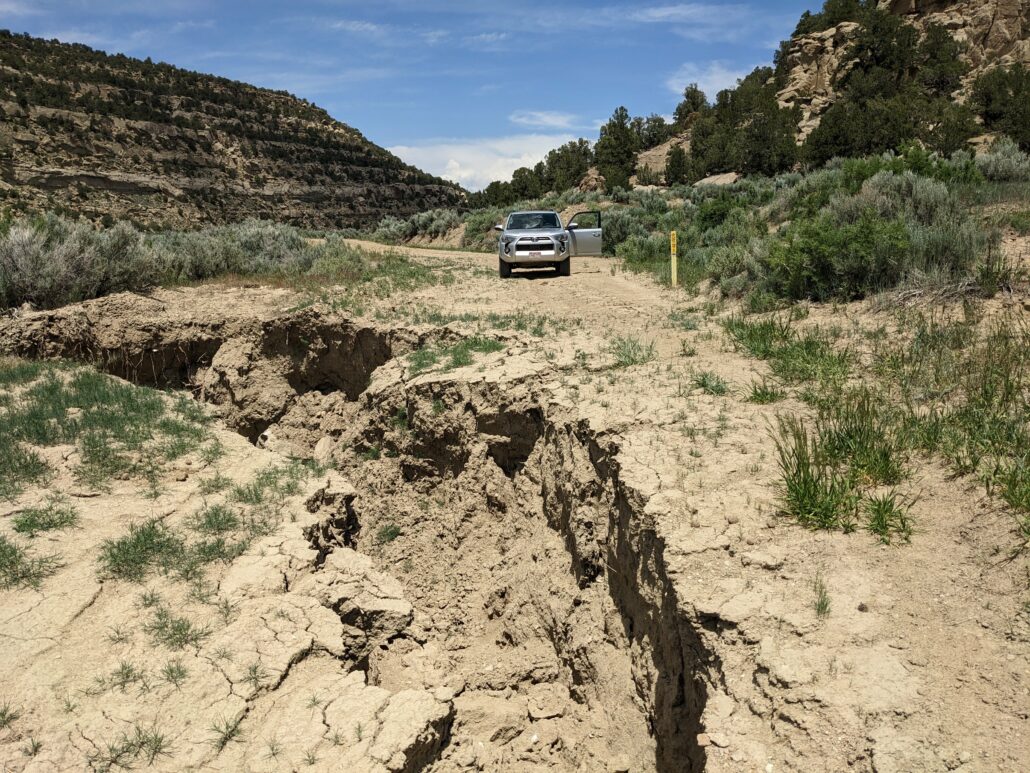
You never know what you’ll find on a forest service road. Especially after a snowy winter!
There are always eyes reflecting back in the beam of my headlamp. Usually, it is deer or elk, their silhouettes looking vaguely alien because of their large ears. Other times, it is a Common Poorwill that sits on the trail, eyes reflecting red, and flutters up in a panic when I walk too close. A handful of times it has been a bear, that crashes away through the undergrowth once it catches a whiff of this unwashed field tech and vanishes astonishingly quickly for an animal so large. Once, it was a pair of eyes ten feet off the ground that made my heart hitch up into my throat before I realized it was a pine marten in a tree.
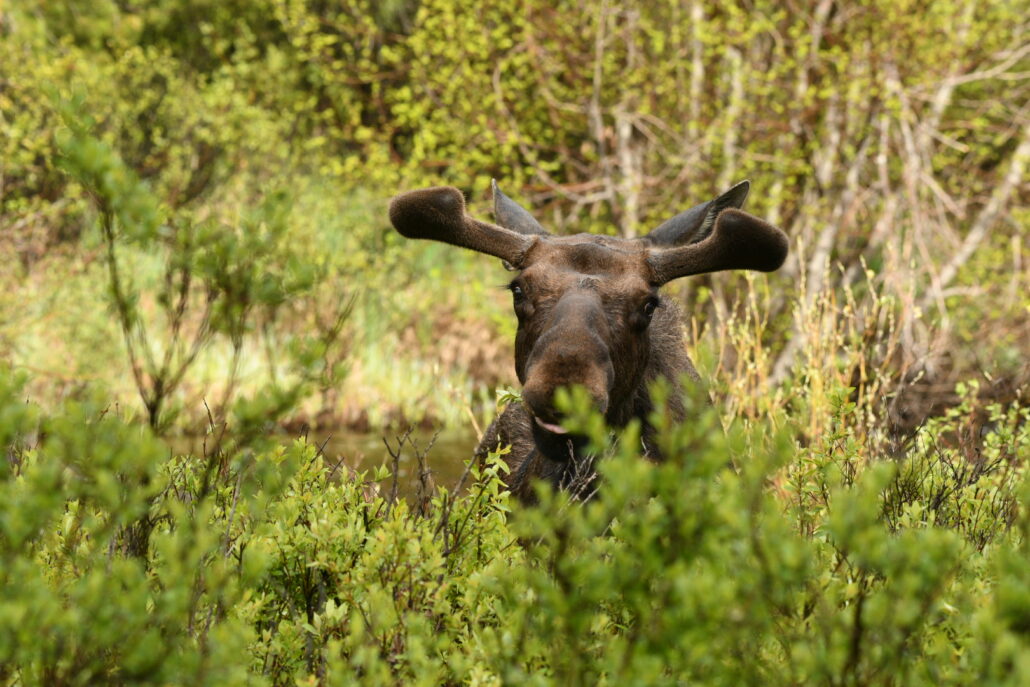
A young moose keeping an eye on the field techs.
Once I get to my survey, I wait for it to get light enough to start taking vegetation and bird data. It is always an exciting moment when I can finally see what kind of terrain I am in. During the hike in, it is hard to tell what I am hiking through, apart from that it is inevitably uphill. As light slowly creeps across the horizon, the tree trunks resolve themselves into pines or spruces, and I might be able to see an alpine ridge in the distance. The bats retreat to their crevices in trees and rock walls, and the birds begin to sing. Then the fun begins. As soon as it is light enough to identify birds visually, I start the timer and begin frantically writing down species, the distance to each individual, and how I detected them. Muscle memory kicks in and I fall into a familiar dance of clipboard, binoculars, and range finder.
Each survey consists of 16 points, 250 meters apart, with a six minute point count on each point. Bird activity decreases as the morning goes on, and there is a strict time limit to complete as many points as possible. In the early season, it was relatively easy to do all 16 points. Now that it is the end of the season, my surveys are all above 9,500 feet of elevation and it has become more challenging to finish all 16 points. The vegetation is thicker, the hillsides steeper, and the air thinner. Some surveys are labyrinths of Gamble’s oak, that do not have a best way through other than brute force and leave me with scratched limbs and tattered clothes. Others are spruce-fir forests littered with deadfall that I have to dance through. At the highest surveys in the high alpine, my lungs burn from the lack of oxygen and my legs feel much heavier than they should. As challenging as these surveys are, there are rewards in each of them: confusions of warblers in the oaks that come within a few meters of me, completely oblivious to my presence; Brown Creepers in the conifers; and Golden Eagles in the high alpine that make all the marmots go suspiciously quiet.
- A Black-throated Gray Warbler with nesting material
- The beauty of the alpine in early summer. Photo by Dave Spangenburg
The season started lower, and the rest of the crew and I have been working our way up in elevation as the snow melted and the migratory birds arrived. My first weeks were in Utah, in rolling sagebrush fields where sage-grouse flushed ahead of me as I hiked to my surveys in the dark and pronghorn antelope barked at me during surveys. One of my surveys was in the Newfoundland Mountains, a range of peaks in the Great Salt Lake miles away from civilization. It looked desolate at first glance, but once I hiked around for a while, you would see horned lizards on the ground and desert bighorn sheep that appeared and disappeared in the blink of an eye. Then I moved to the Uncompahgre Plateau and finally the San Juan mountains.
There are treasures to be found in all those places—horned lizards in the desert, antlers in the pinyon-juniper woodlands, and petroglyphs etched in the sides of red canyon walls. The bird life in these far-off corners is spectacular. There are Black-throated Gray Warblers with their hoarse calls as they glean insects from the pinyon pines and Hermit Thrushes with their strangely ethereal songs. In the grasslands I was accompanied by the songs of Burrowing Owls and Long-billed Curlews. In the beginning of the season, there were flocks of Horned Larks in the grasslands and Rock Wrens in what seemed like every rocky outcrop. Now that it is the late season, I am encountering the same species, Horned Larks on the alpine tundra and Rock Wrens on boulder fields. It is like meeting old friends again after not seeing them for a while.
- Burrowing owl. Photo Gerhart Assenmacher
- Long-billed Curlew. Photo by Andrew Pierson
After my last point, I hike back to the car where I started my day many hours before. The hike back feels as exciting as the hike in, as I can now see everything. There might be fairy slipper orchids in a gully, or an arborglyph made by a shepherd nearly a hundred years ago. Back at the car, I take off my hiking boots, make some lunch, and figure out where I need to go for my next survey. I will eat, and sleep, and rise again early the next day to do it all again.
Each day shows something new and exciting. That is why I continue to wake up at 2:30 a.m. and hike through the dark. Because no matter how far away the dawn is, it will come at some point, and I will be there with clipboard and binoculars at the ready.
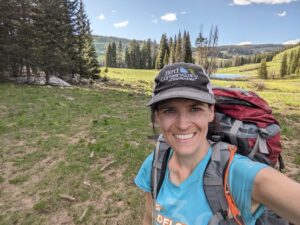
The author backpacking to her field site
The author, Julia Snieder, is a seasonal field technician for our IMBCR program. All photos are by Julia unless otherwise noted. CLICK HERE to learn more about IMBCR. Thank you to all of our field technicians that get up before the sunrise to count birds in the name of science. If you are interested in becoming a field tech for IMBCR keep an eye out on our JOBS PAGE. We begin hiring in late 2023.


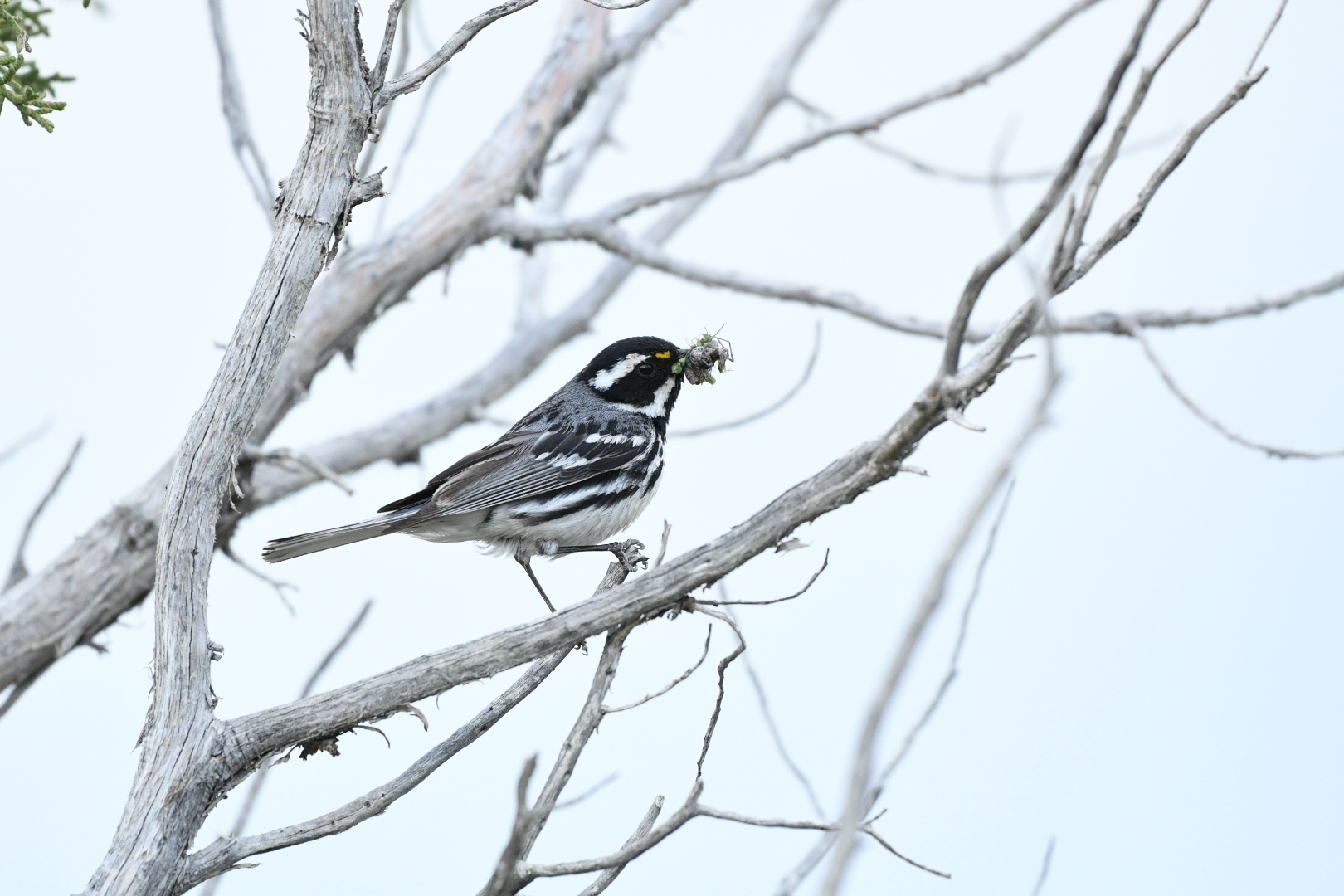
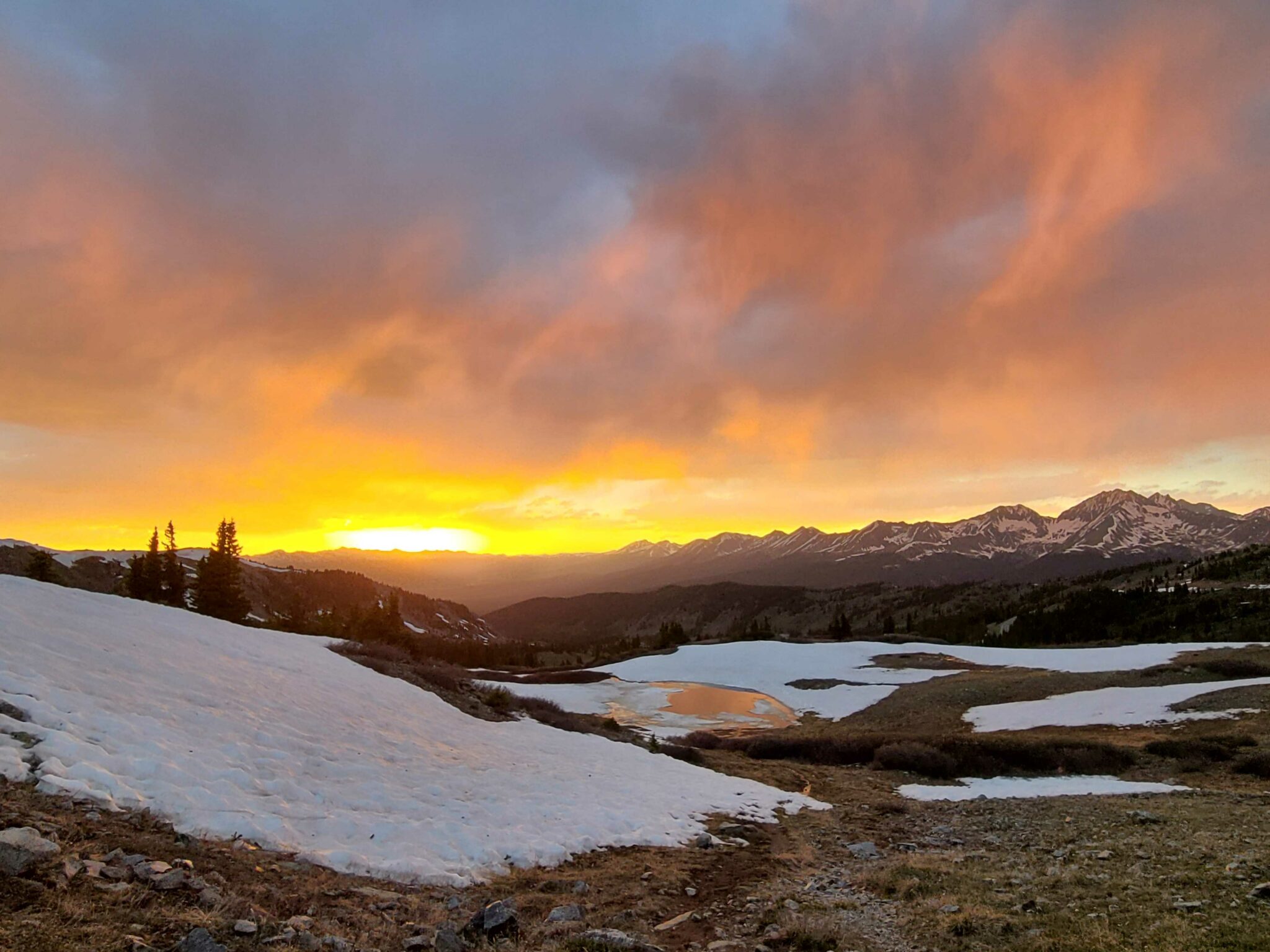
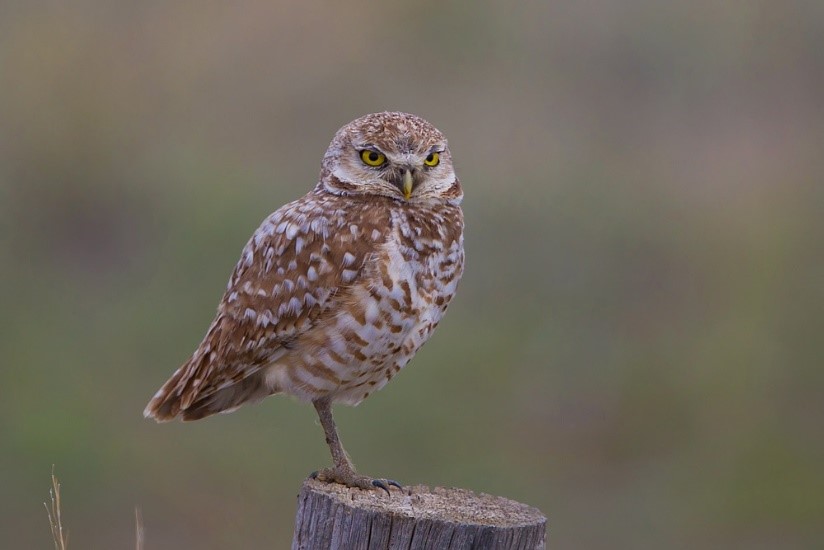
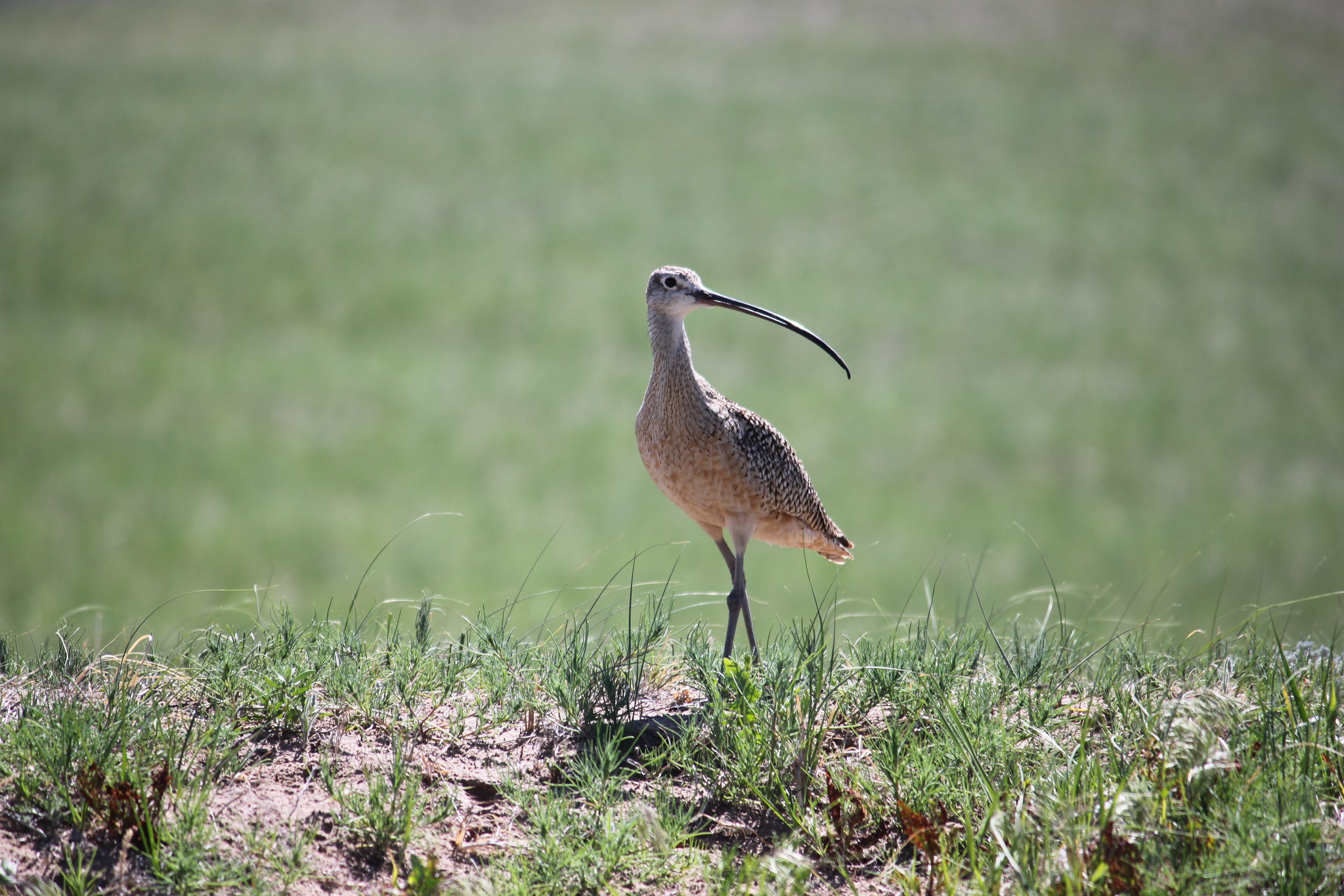

 Donate
Donate